Photos: Ghostly dumbo octopus dances in the deep sea
A rare sight
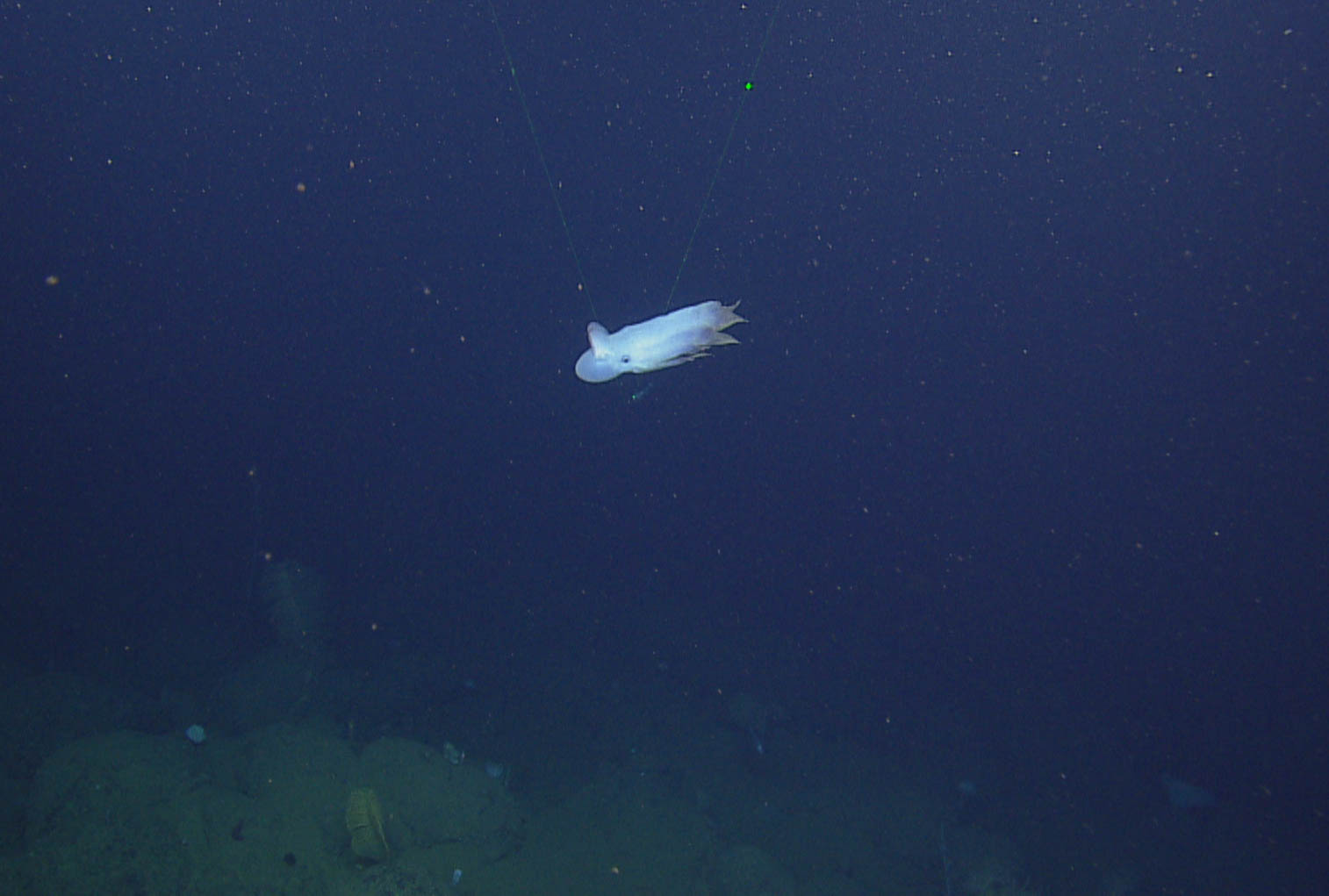
During the Oct. 23, 2018 dive of the ROV Hercules, part of the Nautilus exploration program, a cirrate octopod of the Grimpoteuthis species swam into view. Using the scaling lasers aboard the ROV, the research team estimated the animal to be less than 2 feet (60 centimeters) long.
Related: Watch the video of the ghostly dumbo octopus
Graceful creature
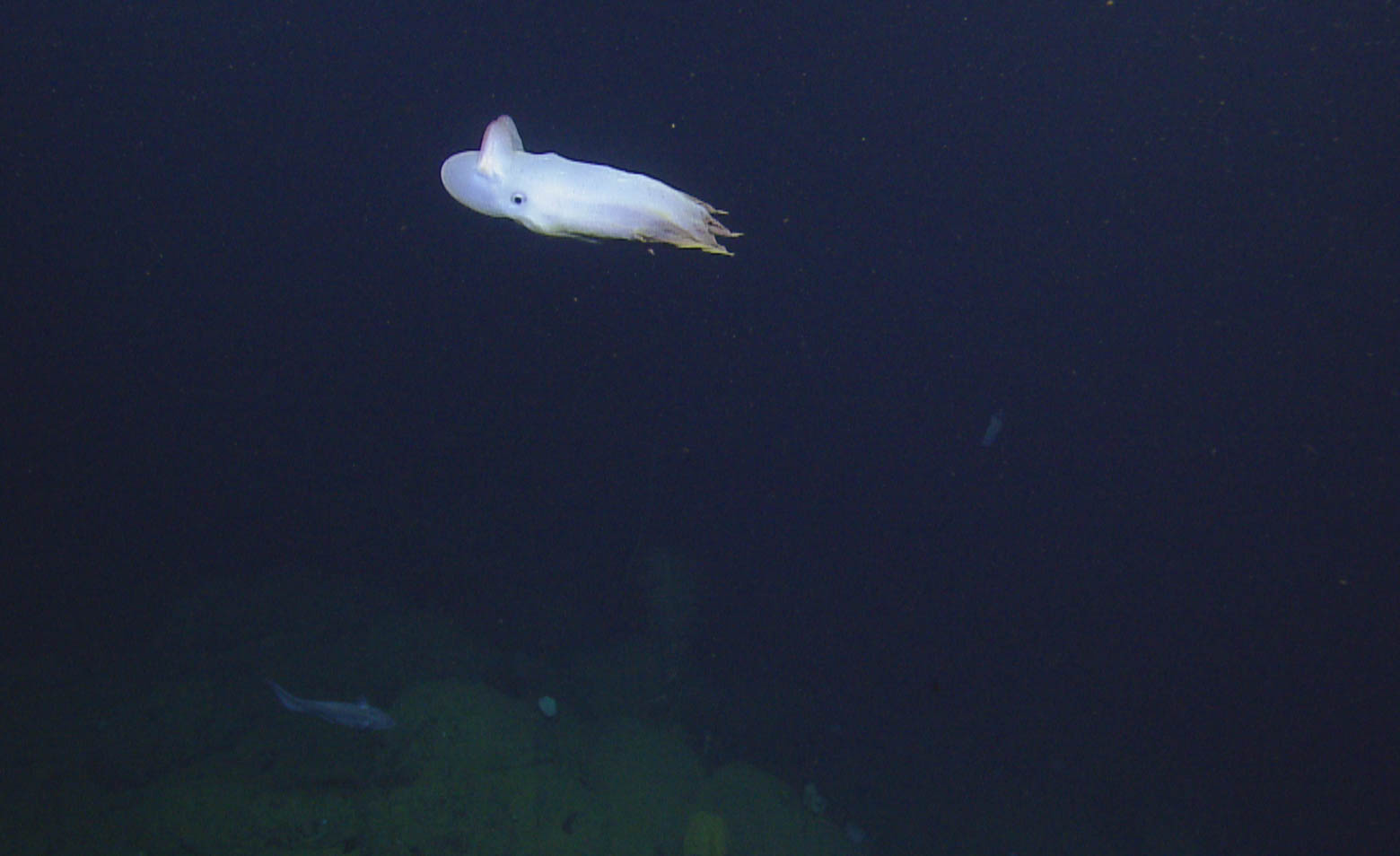
Commonly known as the dumbo octopus, the animal was traveling at about 10,870 feet (3313 meters) below the surface of the ocean at the Davidson Seamount.
A frightful apparition
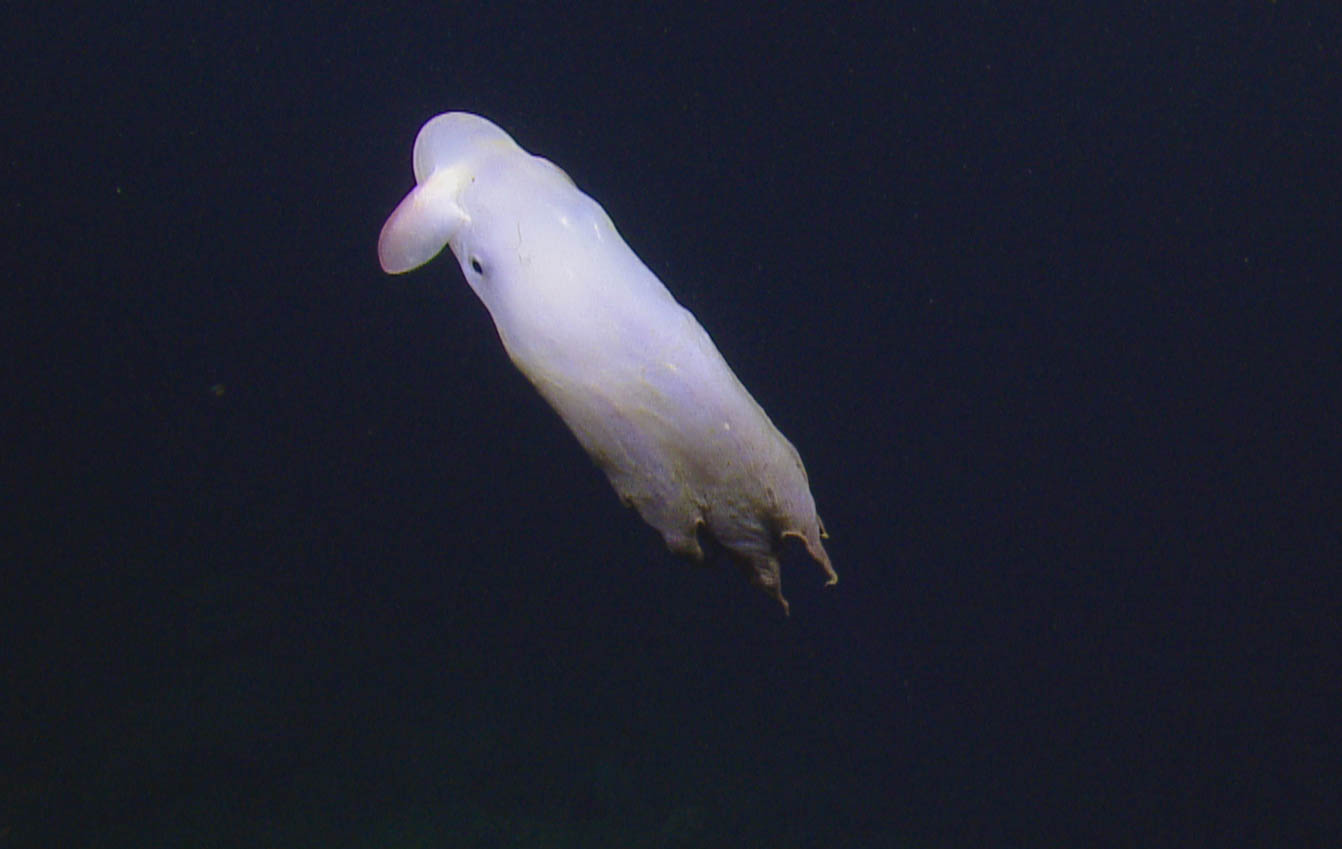
Almost ghostly in appearance, the cirrate octopus floated past the camera, using its wing-like fins to move.
Just keep swimming...
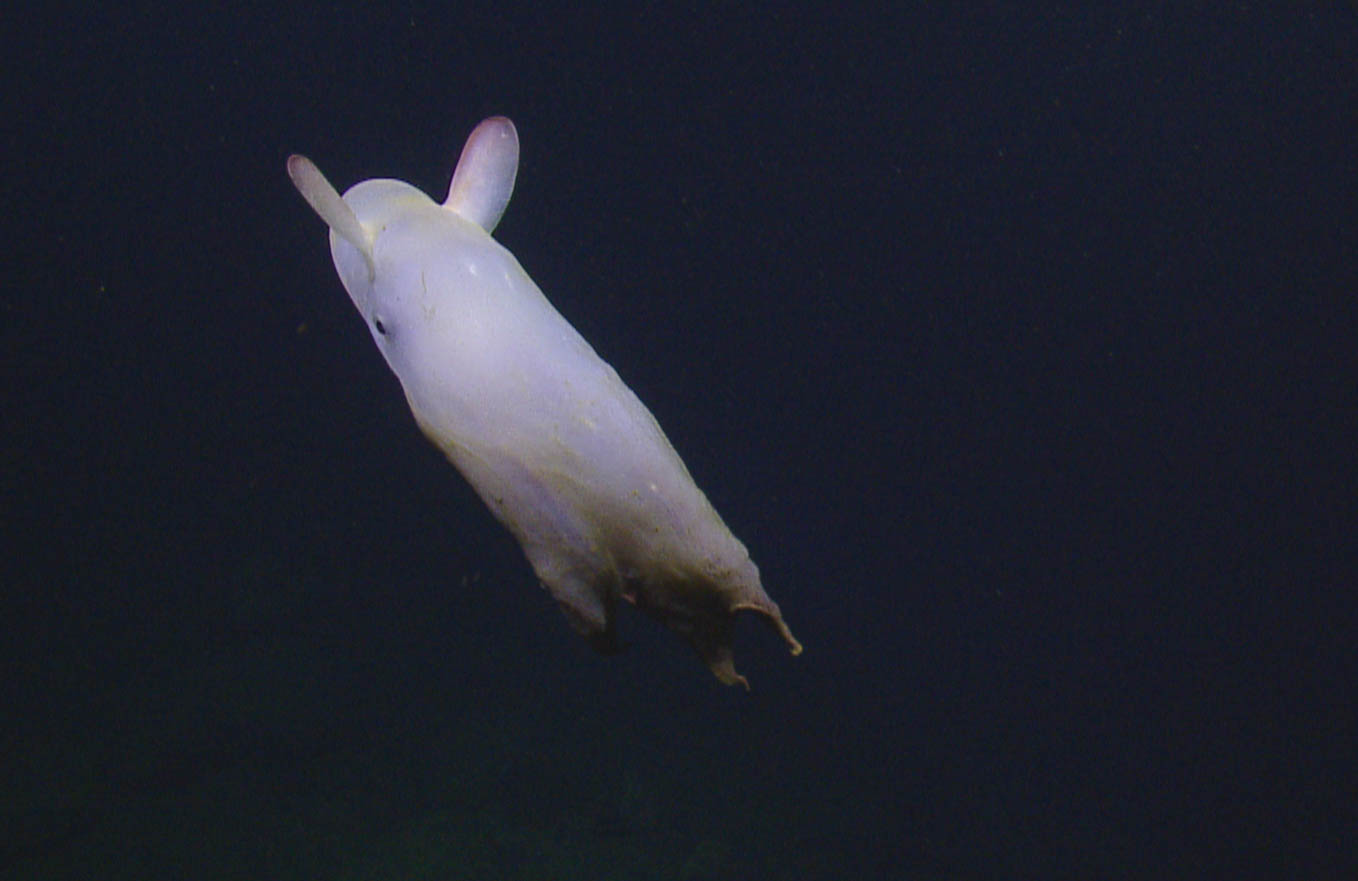
Flapping its fins, the nearly 2-foot long (61 centimeters) octopus maneuvered its way through the water inside the boundaries of the Monterey Bay National Marine Sanctuary.
An exciting capture
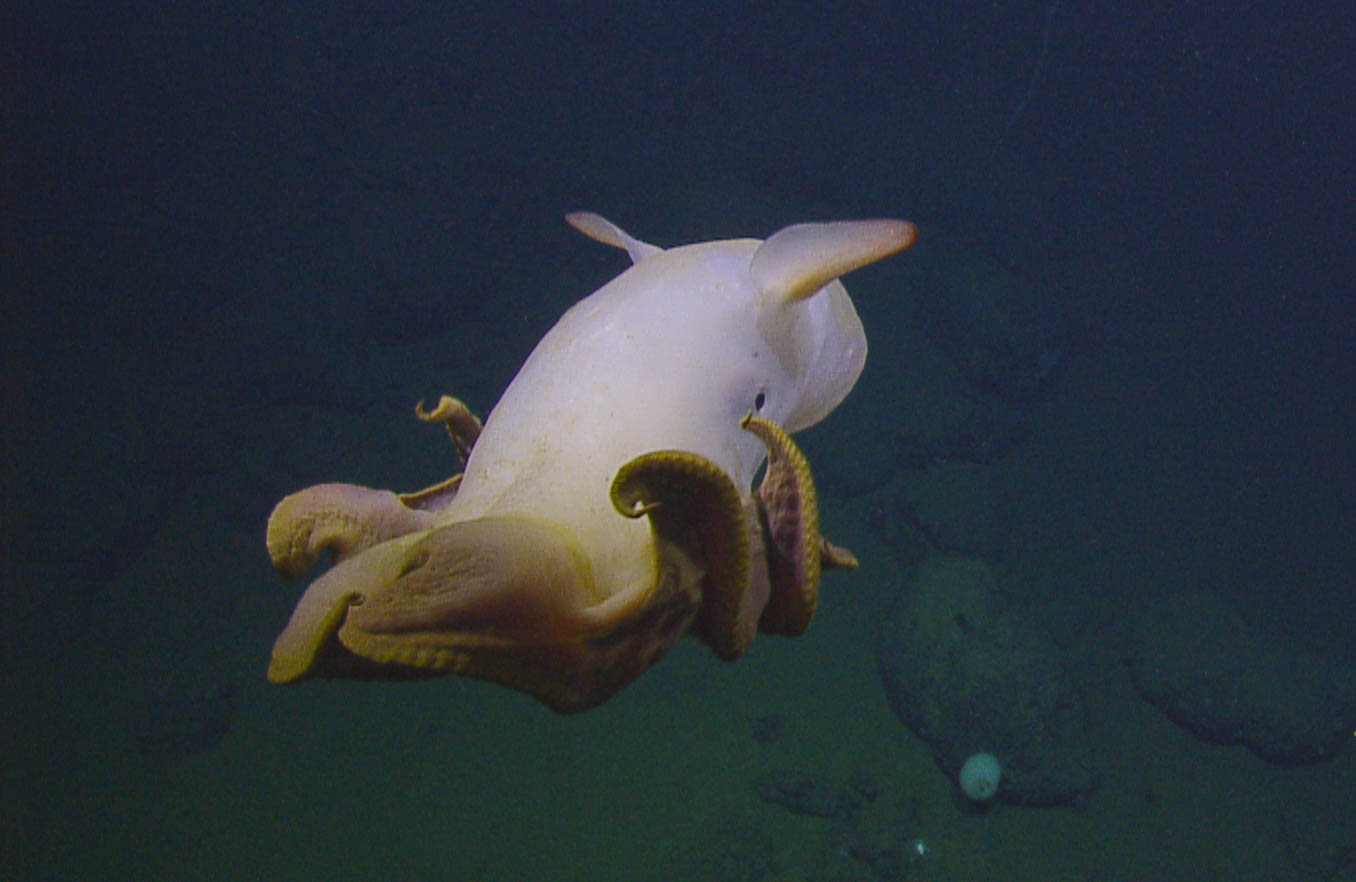
The sighting of this elegant animal took place on the first dive of the Nautilus expedition. Read more about the expedition at the Nautilus website.
Dancing and swimming
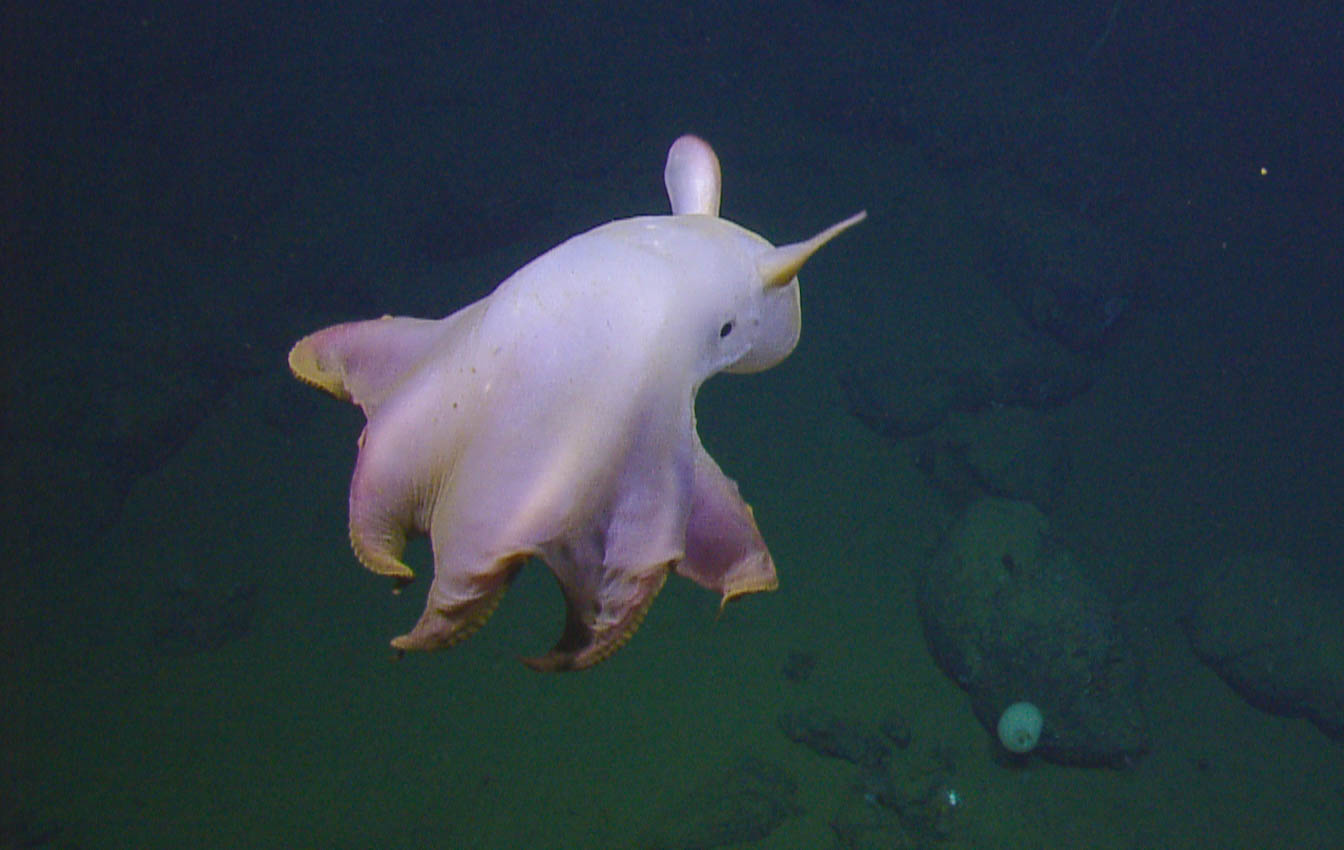
The expedition, scheduled to last from Oct. 21-31, 2018, aims to report on the life in the deep-water region southeast of Davidson Seamount, which is located off the coast of Monterey, California.
Sign up for the Live Science daily newsletter now
Get the world’s most fascinating discoveries delivered straight to your inbox.
Revealing secrets
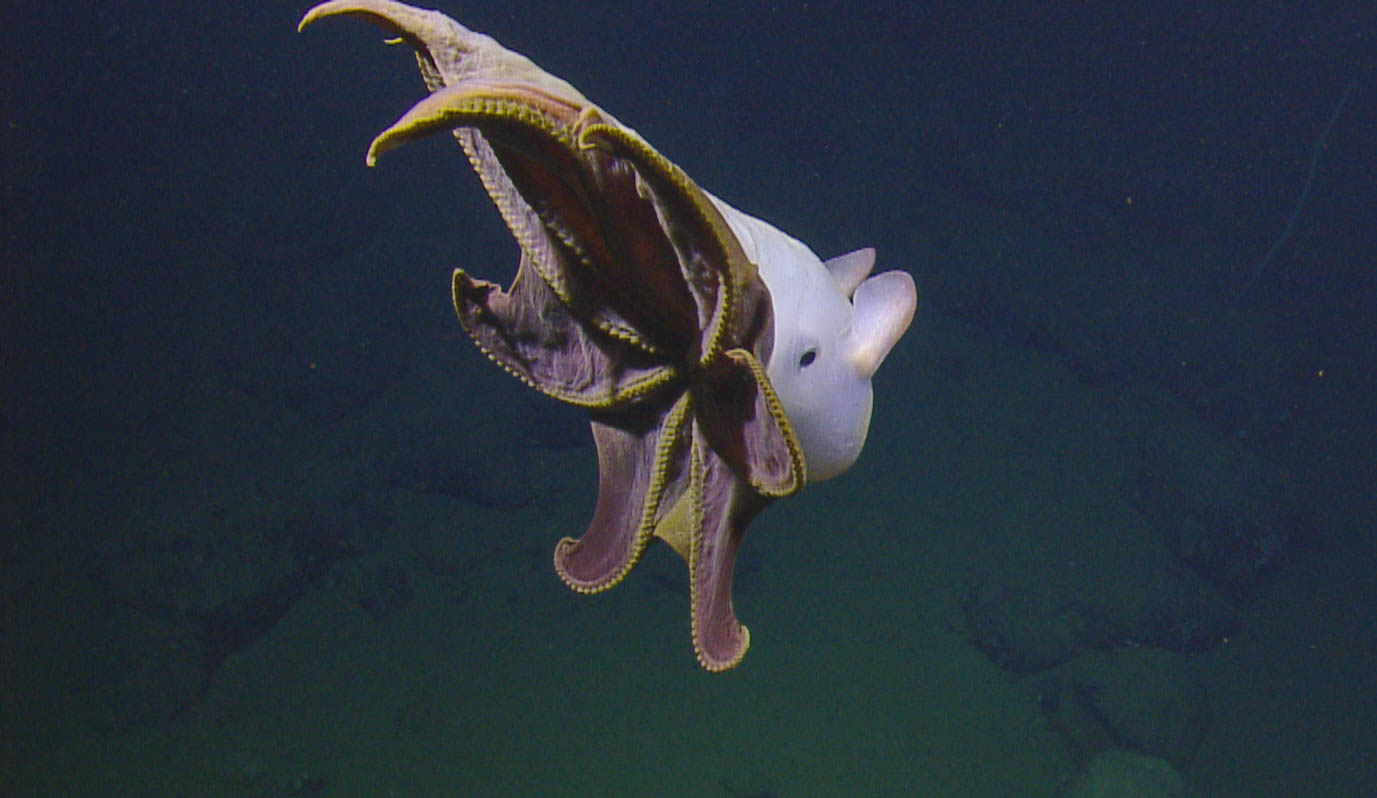
The octopod has also been called the umbrella octopus. The animal treated researchers to a view of its web, revealing each of its eight sucker-covered arms.
By any other name
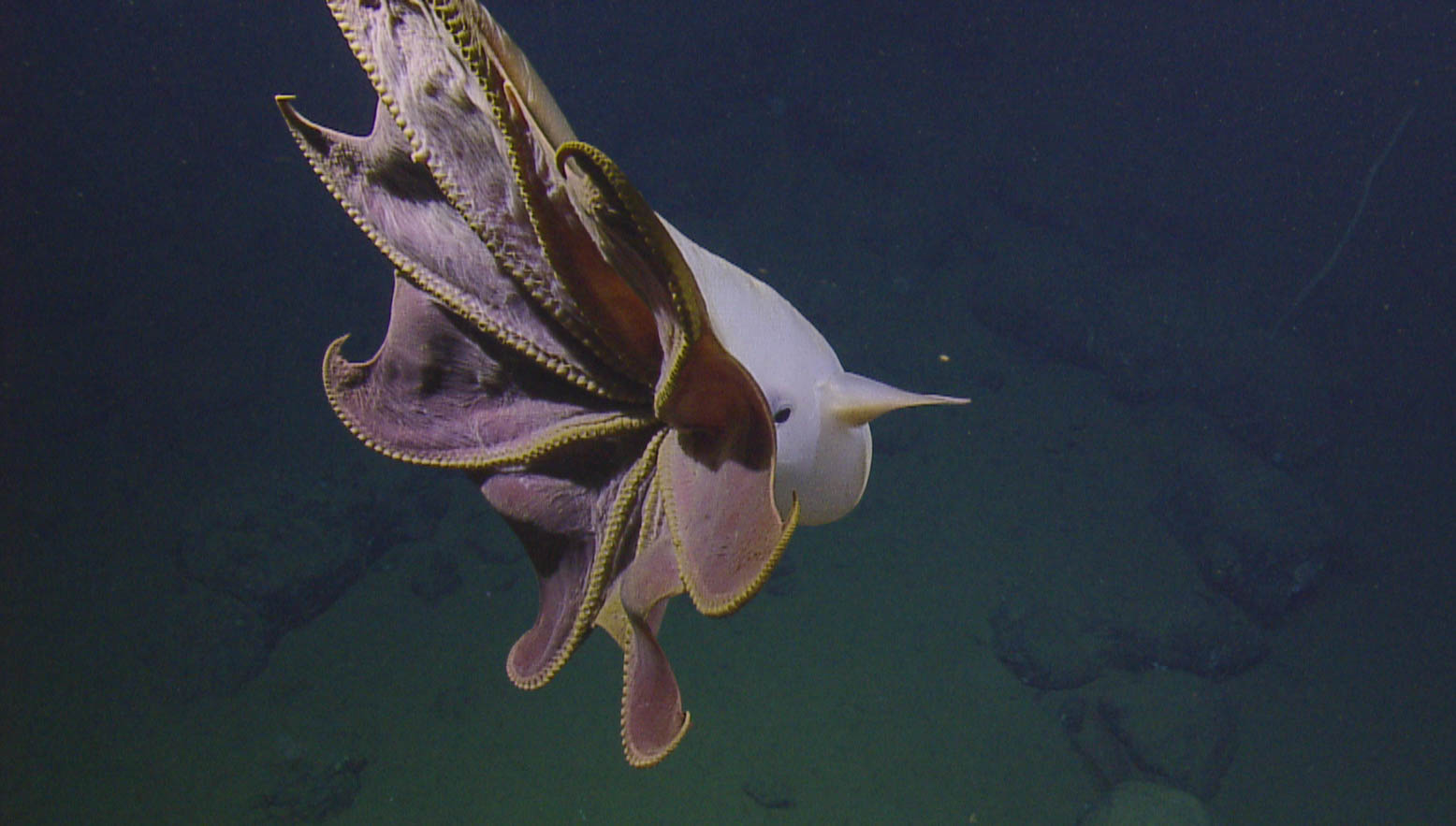
The Grimpoteuthis has paired sets of finger-like muscular structures called cirri which span the entire length of the tentacles. The cirri help capture prey.
Showing off
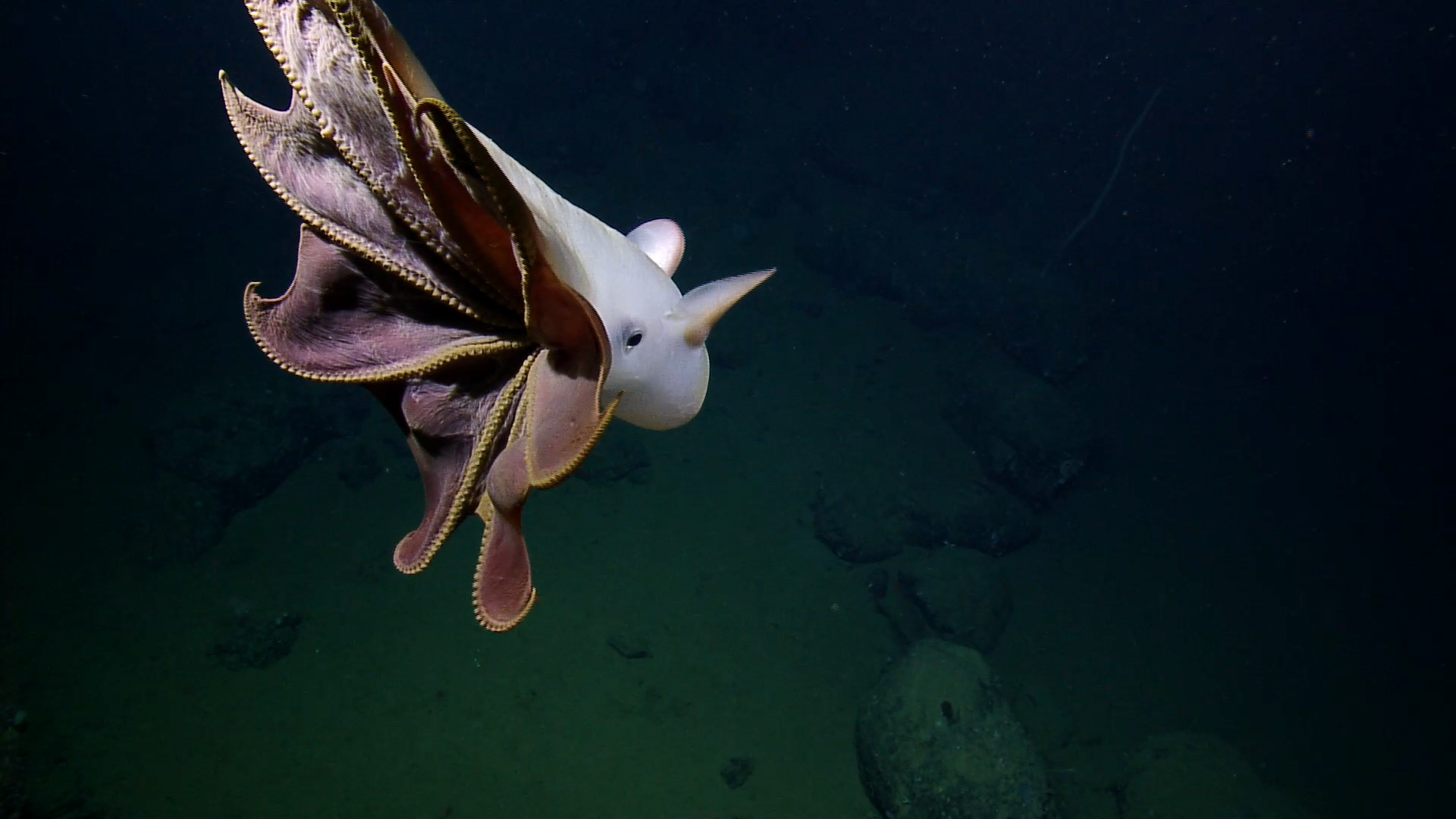
The octopod gives the ROV a great view of its eight arms, web and cirri.
Tentacles everywhere
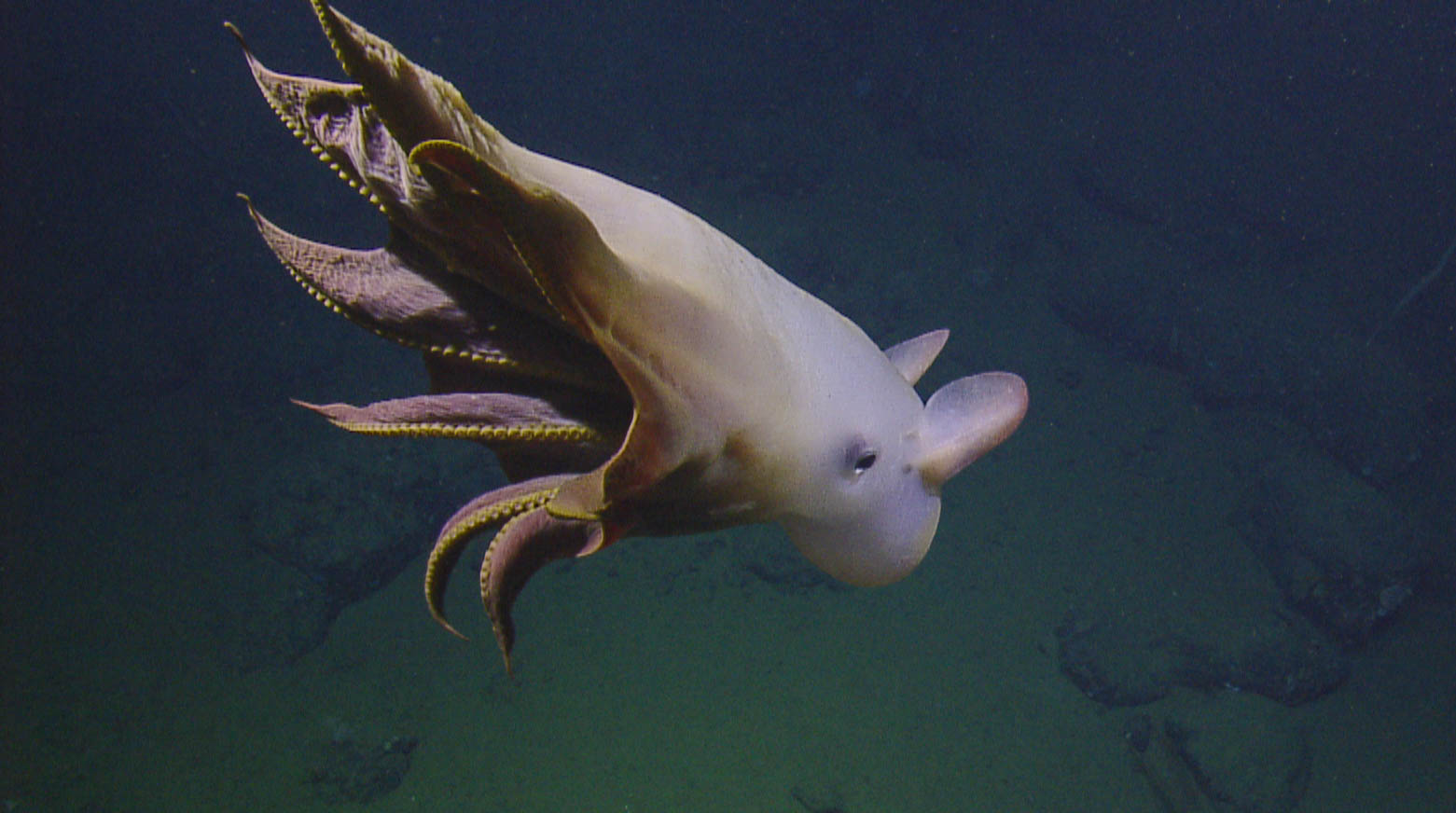
This particular creature was filmed in a section of the Davidson Seamount that was previously unexplored. It was one of many octopods spotted on the dive. See more images of the plethora of octopuses.
Teams of researchers
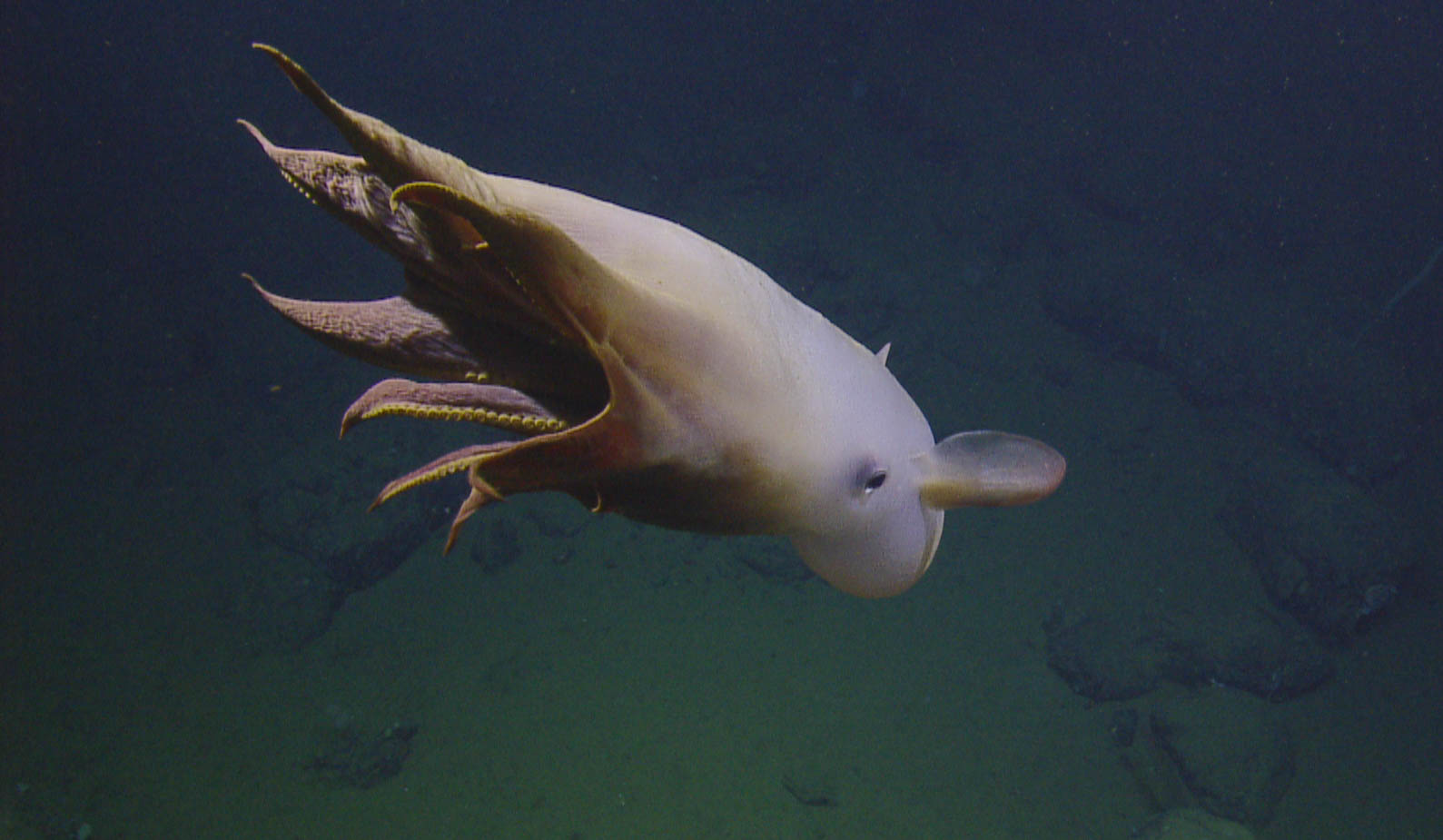
The Nautilus team includes scientists, ROV pilots, navigator, data logger, video engineer and science communicator. Each team rotation employs nine people.









